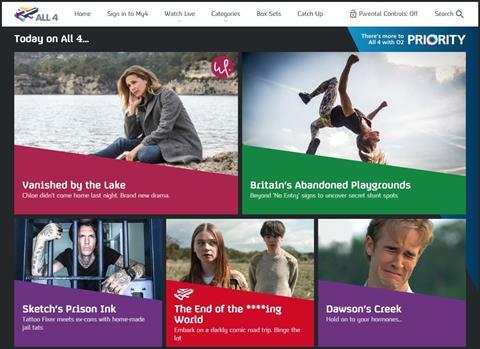In the second of a two-part series on data in broadcasting, Ambrose McNevin speaks with Accenture’s Gavin Mann.

The first time Gavin Mann heard a broadcast leader speak about data was at the 2013 Royal Television Society (RTS) Cambridge Convention when Channel 4 Chief Executive David Abraham (who will leave his post in 2017 to start a new media venture) was asked what kept him up at night.
“Channel 4 were a leader in this space mainly because David Abraham was a visionary,” says Mann, who is Global Broadcast Industry Lead at Accenture and a member of the IBC Council.
“[Abraham] was asked what kept him awake at night and he basically said: ‘Data and algorithms.’
”This was the first time I heard a CEO of a big media company say that. He was very specific about where he saw the value and we agree with him. Where data can be used effectively is in the ability to connect.”
Data collection and processing is not new to broadcasting.
But what is new is collecting and processing at previously unimagined scale and actioning at undreamt velocity.
Broadcasters are not only becoming fully engaged with the power of data but are in many ways ahead of many other parts of the media.
Because of their historic obsession with numbers, broadcast firms should be well placed to deal with the big data phenomenon.
But questions remain about how broadcasters are using data, how it is changing their operating models and whether traditional broadcasters can ever ever hope to catch the digital native, data driven giants such as Netflix, Amazon, Facebook and Apple. And should they even try?
Read more Data in broadcasting – media firms’ changing relationship with consumers and the advantage of data implementing the business transition.
If you are advertising funded it is pretty clear that data can be monetised because it provides the ability to better help connect brands and advertisers with the right audiences and at the right time.

The data collection began with 4OD when Channel 4 started to enable audiences to sign in for an improved, personalised viewing experience. More recently Channel 4 has made signing in mandatory to access its shows.
“You need to sign in to get to the content and it was a clear business decision for them to do that.”
Says Mann: “The BBC was not far behind them with the Your BBC digital initiative. It has reached very significant numbers of registered users in just a few years.”
The obvious benefit is that the BBC and Channel 4 are learning about their audiences but not through the route of buying lots of information and building complex maps about them.
But it is about them starting to learn what people are watching and what content they share.
The outcomes are many and varied, says Mann, with a clear benefit for schedulers and marketers, providing them information to aid with decisions about what to put on when and who to target with it.
And in addition, if you have a remit to help the audience discover content that they don’t know exists or matches their interests then this ability to move the audience through the discovery process becomes key. And it is a lot more complex than simply building a recommendation engine.
“It is particularly interesting for organisations like the BBC which has many products. The ability to move you across the site from news to a documentary about a topic, or from the sports site to another product.”
Discovery but not commissioning?
Data should be used to help the audience find the content that they love but not necessarily change the way content is commissioned, produced or acquired, says Mann.

“I think [commissioning] will continue to be largely an art-driven rather than science-driven business – at least let’s hope it does.
“So it is not about entering a space where suddenly everything is algorithm-driven because we all know about the wonderful role of these amazing creators who make content that people don’t even know they want yet. Let’s not throw the baby out with the bath water,” he says.
Are all significant data capture efforts being done online and it is only informing online strategy? And is there value from capturing data from digital linear engagement?
“There is an opportunity to extrapolate from online back into linear broadcast and I know of a number of examples where that has happened, particularly if you can get statistically relevant samples of the linear behaviour in addition to the online behaviour.”
And there are plenty of opportunities on connected platforms, where it is possible to splice linear and on-demand viewing together to create a total picture of viewer behaviour.
“There are a whole host of sophisticated things you can do just by understanding how people are interacting with the set top box. There are reliable ways to predict behaviour of users just by the way they use the remote control.”
Combining data from online and linear and applying actions to it is, he says, the holy grail. Key here is access to data which is not always readily shared between broadcasters and platform operators.
The broadcast industry is very well placed compared to almost every other media sector, believes Mann.
“A large amount of activity is in response to the scale of the some of the new digital natives. But broadcasters have scale of their own” - Gavin Mann
This is because there were early movers who created compelling models such as the BBC’s iPlayer, which became mainstream very rapidly and spawned many similar offerings from other broadcasters.
Another reason, he says - and this may be as much down to good fortune as forward planning - is that the linear model and digital model co-exist very comfortably. The evidence for this is in consumer behaviour.
“I don’t want to never watch linear TV,” says Mann. “I don’t want to not tune into the schedule. It still has a key part to play. For most people, the routine is get home from work and watch TV to be entertained until the news comes on. That is not going away fast. It is being enhanced by a lot of the new digital solutions. There is this ability to keep both horses going.
“At some point in the future – but there is a lot of road left before we reach this – it will become exclusively distributed over IP.”
Broadcasters have many challenges and what you can do in that scenario is to continue to be close to your audience. Continue to learn about your audience. Continue to learn about the broader business context in which you operate. And that means having the ability to gather information about the audience and process that.
And the biggest change in becoming more data driven is yet to happen.
Collecting information, processing it, reporting on it and acting on it is quite a long process.
The digital native operating model has grown up around having access to vast pools of data and deep levels of analysis. And the operating model allows them to react almost at a platform level rather than, for example, going to a board meeting to discuss ‘what are we going to do?’
It is pivoting that operating model to be much more data and audience centric that is yet to happen.
How will the competitive landscape play out in 1-3 years?
Mann said: “I don’t believe the threat in 1-3 years is from new entrants. Without a doubt, a large amount of activity is in response to the scale of the some of the new digital natives. But broadcasters have scale of their own.”
When to jump your S curve
“Typically, in a new businesses, there is low value initially, so a slow growth, there are early adopters then this accelerates and becomes mass market and the value spikes and then there comes a certain time when it tails off again because the market is saturated or something new comes along,” says Accenture’s Gavin Mann.
“The trick is being able to jump from one S curve, to another at exactly the right time.
Our premise, and it certainly applies to broadcasters, is that you shouldn’t be solely focused on thinking about jumping that S curve.
“But you should be using digital technology to transform your current S curve. You can use data to take cost out of your linear broadcasting but also use data to increase revenue in the core.
If you are in the pay tv business you use data to increase revenue. For years operators have used more traditional CRM data to optimise revenues, but now there are huge opportunities to use interaction data at unprecedented scale – and in the core business.
This enables companies to understand what makes their subscribers tick, how to improve experience and revenues and where to cut costs or reprioritise effort.”
The use of data can be used in each of the four stages as companies traverse the S curve:
- Transform your core
- Grow your core
- Scale new products, services and business models thirdly, issue new services, for example a now TV for a new revenue stream
- Make a wise pivot from established to new business models
“I must emphasise that most businesses are in the process of traversing the S curve,’ says Mann.
“That’s pretty much where the music industry is right now. Digital and subscription is the priority and physical is the secondary, but still important, in certain markets and segments.
“We’re a long way from that in the broadcast market. The core is linear and will remain for a long time.”
























No comments yet